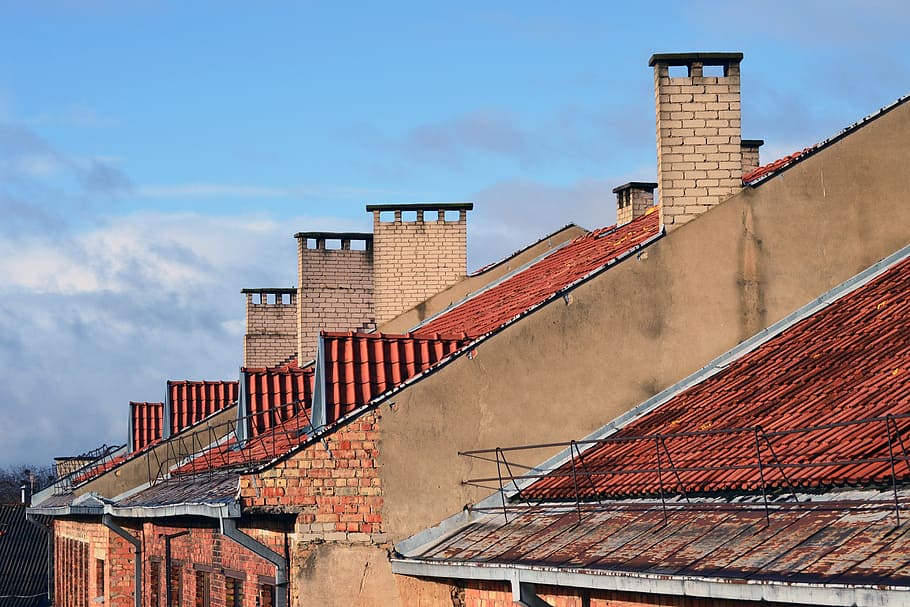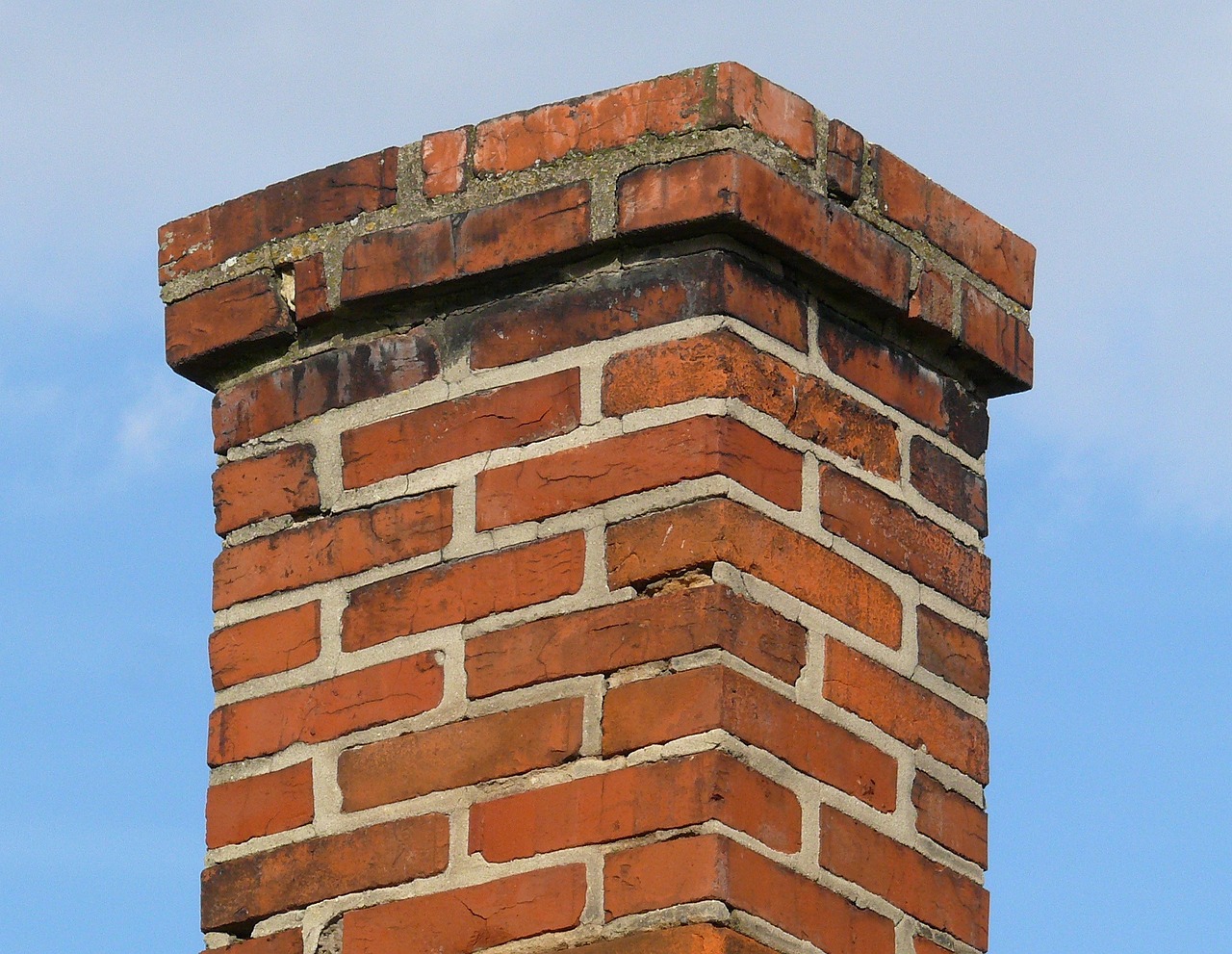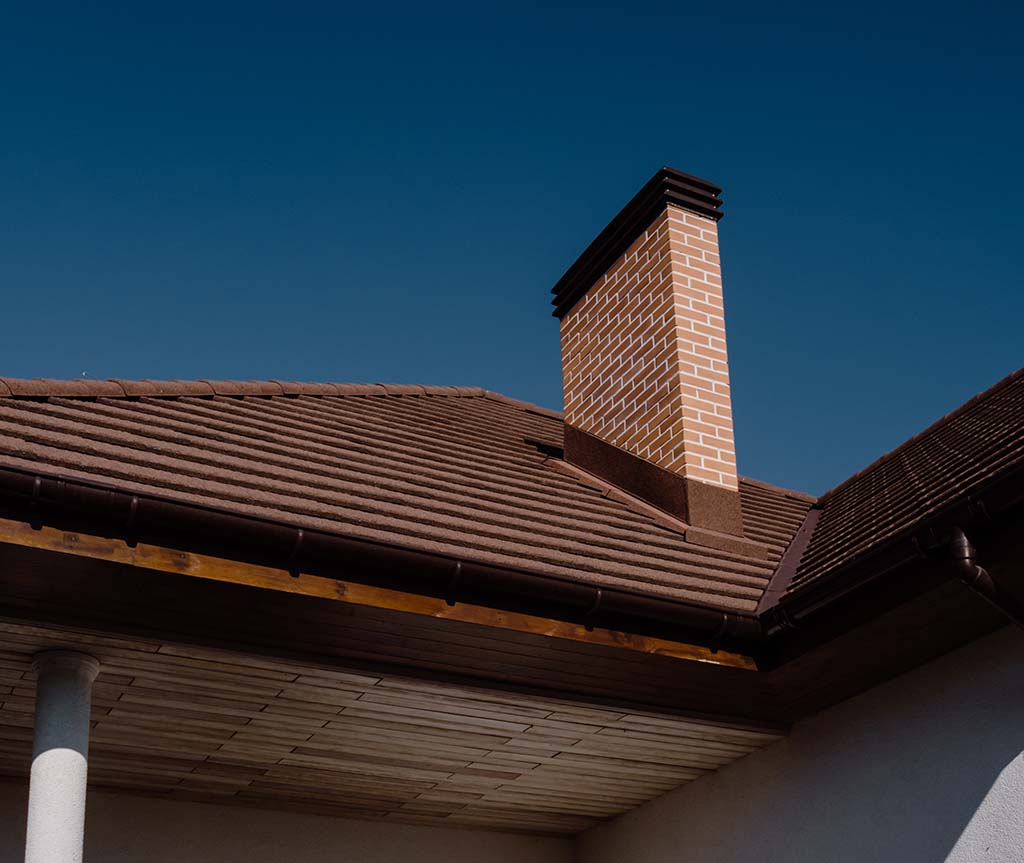Chimneys are not just architectural elements that add character and charm to our homes; they also serve a crucial purpose by venting smoke and gases from our fireplaces, stoves, and furnaces. However, the constant exposure to the elements can take a toll on the masonry, leading to wear and tear over time. That’s where chimney tuckpointing comes to the rescue!
In this blog post, we’ll delve into the world of chimney tuckpointing and explore its significance in preserving the integrity of your masonry. We’ll uncover the essential role this specialized technique plays in maintaining the health and safety of your chimney and entire home.

Understanding Chimney Tuckpointing
Before we dive into the importance of chimney tuckpointing, let’s take a moment to understand what it is. Tuckpointing, also known as pointing or repointing, is a meticulous process used to repair damaged mortar joints in masonry. Over time, weathering, temperature changes, and moisture can cause the mortar between bricks or stones in a chimney to deteriorate.
The weakened mortar not only compromises the structural stability of the chimney but also creates pathways for water to seep into the masonry. This can lead to water damage, mold growth, and even the risk of chimney fires. Tuckpointing involves carefully removing the deteriorated mortar and replacing it with fresh mortar, restoring the strength and integrity of the chimney.
The Importance of Chimney Tuckpointing
1. Preventing Water Damage
Water is one of the biggest enemies of masonry chimneys. When water penetrates the bricks and mortar joints, it can cause them to deteriorate further, leading to crumbling and cracking. In colder climates, water trapped within the masonry can freeze and expand, causing significant damage to the chimney structure.
Tuckpointing basically helps create a strong barrier against water infiltration, preventing moisture from seeping into the masonry. By addressing damaged mortar joints promptly, you can avoid costly repairs caused by water-related issues.
2. Extending Chimney Lifespan
A well-maintained chimney can last for decades, but neglecting necessary repairs can significantly shorten its lifespan. Tuckpointing is a proactive approach to preserving the integrity of the chimney, allowing it to withstand the test of time. Regular tuckpointing can extend the life of your chimney and also protect your investment in your home in general.
3. Ensuring Home Safety
A compromised chimney can pose serious safety risks to your home and family. Weak mortar joints can lead to chimney instability, which may result in chimney collapse or falling bricks. Additionally, water damage can create hazards within the chimney, such as weakening the metal components or rusting the flue liner.
Tuckpointing addresses these safety concerns by reinforcing the chimney’s structure and preventing potential hazards. It also gives you peace of mind knowing that your chimney is secure and your home is protected.
4. Enhancing Curb Appeal
Aside from the functional benefits, tuckpointing also enhances the aesthetic appeal of your chimney. Cracked and crumbling mortar joints can make your chimney look unsightly and age the appearance of your home. With fresh and neatly tuckpointed mortar, your chimney will regain its original charm, while also boosting your home’s curb appeal.

Signs that Tuckpointing is Needed
Knowing when to schedule chimney tuckpointing is essential for preventing further damage and maintaining the longevity of your chimney. Keep an eye out for the following signs that may indicate the need for tuckpointing:
1. Visible Mortar Damage: Cracked, crumbling, or missing mortar between bricks or stones is a clear indication that tuckpointing is necessary.
2. Water Leaks: If you notice water stains on the ceiling near your chimney or signs of water inside the fireplace, it’s a sign that water is infiltrating the chimney and tuckpointing is needed to seal the leaks.
3. Efflorescence: White, chalky deposits on the exterior of the chimney are called efflorescence and can be a sign of water damage.
4. Spalling Bricks: Bricks with chipped or flaking surfaces are signs of moisture-related damage and may require tuckpointing.
5. Chimney Instability: If your chimney shows signs of leaning or is not structurally stable, tuckpointing can also help address these issues.
6. Aged Mortar: Over time, mortar naturally wears down, so older chimneys are more susceptible to damage and may need tuckpointing.
The Tuckpointing Process
Tuckpointing is a process that requires skill and expertise to ensure a successful outcome. Here’s a brief overview of the steps involved in tuckpointing:
- Inspection: A professional chimney technician will thoroughly inspect the chimney to identify damaged mortar joints and assess the extent of the repairs needed.
- Mortar Removal: The old and damaged mortar is carefully removed from between the bricks or stones using specialized tools.
- Cleaning: The joints are cleaned of any debris and loose particles to create a clean surface for the new mortar to adhere to.
- New Mortar Application: Fresh mortar is skillfully applied to the joints, ensuring a proper fit and seamless integration with the existing masonry.
- Tooling: The new mortar is shaped and tooled to match the surrounding masonry, providing a neat and uniform appearance.
- Final Inspection: The chimney is thoroughly inspected once more to ensure that all repairs are completed successfully.
DIY vs. Professional Tuckpointing
Tuckpointing is a precise and labor-intensive process that requires knowledge and experience to achieve optimal results. While some homeowners may consider attempting tuckpointing as a DIY project, it is generally recommended to leave this task to experienced professionals. Professional chimney technicians have the expertise, tools, and materials necessary to perform tuckpointing correctly and efficiently.
Moreover, improper tuckpointing can lead to further damage and costly repairs down the line. Hiring a professional ensures that the job is done right the first time, providing you with long-lasting results and peace of mind.
Chimney Tuckpointing – Conclusion
In conclusion, chimney tuckpointing is a crucial aspect of maintaining the structural integrity and safety of your masonry chimney. By addressing damaged mortar joints and preventing water infiltration, tuckpointing plays a significant role in extending the lifespan of your chimney and also enhancing the curb appeal of your home.

